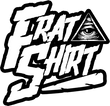The winter solstice, which occurs around December 21st in the Northern Hemisphere, marks the shortest day and longest night of the year. This astronomical event has been significant to many cultures throughout history, including the Freemasons.
For Freemasons, the winter solstice symbolizes the death and rebirth of the sun, a metaphor for the journey of the soul. This connection to the cycle of life and death can be traced back to ancient civilizations, which recognized the winter solstice as a time of rebirth and renewal.
In Freemasonry, the winter solstice is also seen as a time to reflect on the lessons learned in the past year and to set goals for the year ahead. It is a time for introspection and self-improvement, as well as a time to reaffirm one's commitment to the principles of Freemasonry, such as brotherhood, charity, and truth.
The winter solstice is also significant to Freemasons because it coincides with the celebration of Christmas, which is a time of celebration and renewal for many people around the world. As Freemasons, it is an opportunity to celebrate and honor the birth of Jesus Christ, who is an important figure in the teachings of the fraternity.
In addition to its spiritual and philosophical significance, the winter solstice also holds a symbolic place in the layout and design of many Masonic lodges. For example, the east-west orientation of the lodge room is often said to represent the solstice, with the east representing the rising sun and the west representing the setting sun. This orientation is also thought to symbolize the journey of the soul from darkness to light, a central tenet of Freemasonry.
In conclusion, the winter solstice holds a significant and symbolic place in the teachings and traditions of Freemasonry. It is a time for reflection, renewal, and reaffirmation of the principles of the fraternity, as well as a time to celebrate the birth of Jesus Christ and the cycle of life and death.

